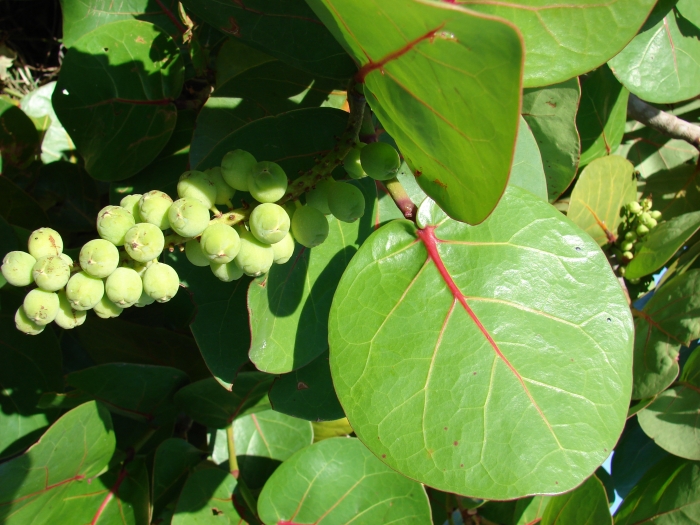Seagrape
(Coccoloba uvifera)
Seagrape (Coccoloba uvifera)
/
/

Forest & Kim Starr
CC BY 3.0

































































































Estimated Native Range
Summary
Seagrape is valued for its ability to stabilize coastal sands and protect against erosion, making it an excellent choice for beachfront planting. It is also used as an ornamental plant in southern landscapes for its attractive foliage and fruit. Seagrape thrives in full sun to part shade and prefers well-drained sandy soils, tolerating a range of soil moisture levels. It is highly salt-tolerant, making it suitable for seaside gardens. While it is wind-resistant and can handle brief cold snaps, prolonged frost is detrimental. The plant’s large leaves may turn reddish before withering in colder temperatures. Seagrape can be propagated from seeds, which must be planted immediately as they do not store well. Potential problems include root rot in poorly drained soils and pests such as scales and borers.CC BY-SA 4.0
Plant Description
- Plant Type: Tree, Shrub
- Height: 25-30 feet
- Width: 20-30 feet
- Growth Rate: Slow
- Flower Color: N/A
- Flowering Season: Winter, Spring
- Leaf Retention: Evergreen
Growth Requirements
- Sun: Part Shade, Full Sun
- Water: Medium, High
- Drainage: Fast, Medium, Slow
Common Uses
Bee Garden, Bird Garden, Butterfly Garden, Drought Tolerant, Edible*Disclaimer: Easyscape's listed plant edibility is for informational use. Always verify the safety and proper identification of any plant before consumption., Fragrant, Low Maintenance, Salt Tolerant
Natural Habitat
native to coastal beaches, sand dunes, and mangrove edges in the Caribbean, Central America, Mexico, South Florida and Northern South America
Other Names
Common Names: Platterleaf, Shore Sea-Grape, Jamaican Kino, Plater Leaf, Sea-Grape, Meertraubenbaum, Uva Caleta, Uva De Playa, Uvero, Raisinier Bord De Mer
Scientific Names: , Coccoloba uvifera, Polygonum uviferum, Coccolobis uvifera, Guaiabara uvifera,
GBIF Accepted Name: Coccoloba uvifera (L.) L.